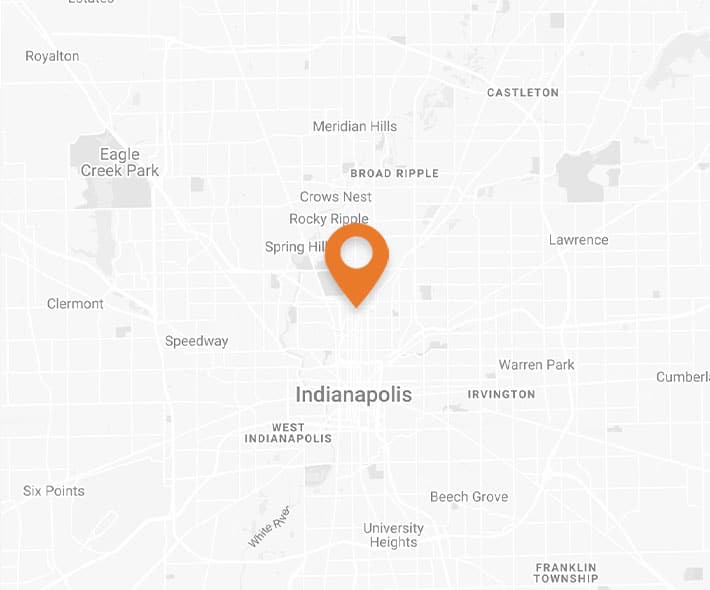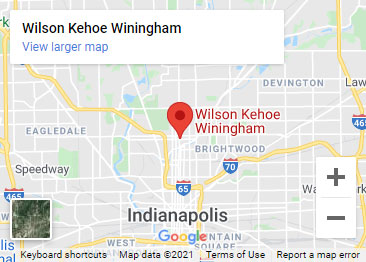Indiana Car Seat Laws
Car crashes are a leading cause of death for children under the age of 13 in the United States. To keep your child safe, it’s important to choose, install, and use the correct child restraint system.
Indiana’s Child Restraint Law covers car seats and booster seats and is based on a child’s age, height, and weight. All 50 states have similar laws. While these laws differ from state to state, they all have something important in common: They require young children to travel in approved child restraint devices and older children to use adult safety belts. On this page, you’ll learn more about the Indiana car seat law for each individual type of car seat. For reference, here are some brief bullet points.
- Infants (Birth to around 22-40 lbs): Infants must ride in approved, rear-facing car seats from birth until they reach their seat’s rear-facing limit (22-40 pounds, depending on the style and manufacturer). According to manufacturers’ recommendations, infants can ride in either an infant-only car seat or a convertible car seat. Infant-only seats have smaller weight limits, so you will need to upgrade to a rear-facing convertible seat eventually.
- Toddlers (At least 1 year old): Children must be at least one year old to sit in a forward-facing seat. However, they are safest when rear-facing, so they are recommended to stay in that position until they outgrow their seat’s rear-facing height and weight limits.
- Young Children (30-40 lbs): You can legally transition your child to a booster seat when they weigh 30 pounds. However, Indiana State Troopers recommend keeping them in a forward-facing car seat until they are 40 pounds.
- Older Children (8-12 years): Children between the ages of 8-12 should use a booster seat. They can safely transition to a regular seatbelt when they are big enough that the seat belt fits properly.
- General Guidance: Always refer to the car seat manufacturer’s instructions and recommendations when deciding which car seat to purchase and how to install it. Since children grow quickly, regularly review your car seat instructions regularly to ensure they’re still within the height and weight limits.
Keep reading for more in-depth answers to your car seat questions.
Indiana Child Seat Laws
In Indiana, child car seat laws require all child passengers under the age of eight to use child restraint systems in accordance with the manufacturer’s instructions. Additional Indiana car seat age and weight requirements are as follows.
Rear-Facing Car Seats
According to car seat laws in Indiana, children under the age of one and who weigh less than 20 pounds are required to sit in a rear-facing child safety seat.
Many newer types of rear-facing car seats are made for children up to 30–35 pounds. This allows for children to stay in rear-facing car seats for longer, often until age four.
Here’s an important tip about installing rear-facing car seats in your vehicle:
The car seat must be installed at the correct, semi-reclined angle. This is especially important for infants because it helps to keep their airways open. As your baby grows, you will most likely have to adjust the angle that the car seat is reclined at.
It’s important to follow the car seat laws in Indiana and keep your child in a rear-facing seat for as long as possible. It is best for their safety to do so! Once your child has reached the height and weight specified by the rear-facing car seat’s manufacturer, they can transition to a front-facing car seat.
Learn about installing a rear-facing car seat from this American Academy of Pediatrics video. And if you have a convertible car seat and need help installing it in a rear-facing position, check out this video from the National Highway Traffic Safety Administration.
Front-Facing Car Seats
Children who are at least one year old and who weigh 20 pounds or more can be seated and secured in a forward-facing child safety seat with an internal harness system.
Again, it’s important to note that just because your child meets the requirements for a forward-facing seat does not mean they need to graduate quite yet. Some of the car seat laws in Indiana overlap when it comes to age and weight; for example, some rear-facing seats can hold up to 35 pounds.
By the age of four, your child is most likely ready to graduate to a forward-facing car seat. The Indiana Criminal Justice Institute recommends front-facing seats for children four to seven years of age. Additionally, Indiana state troopers recommend keeping your child in a forward-facing seat up to 40 pounds.
Watch the American Academy of Pediatrics’ video guide on how to install a forward-facing car seat.
Once the child is past 40 pounds in weight, they can move up to a booster seat, which is usually a fun step in the growing-up process for any child!
Booster Seat Laws in Indiana
According to Indiana booster seat law, children who weigh at least 30 pounds may use a booster seat, but Indiana troopers encourage parents to keep their children restrained in a forward-facing seat until they weigh at least 40 pounds.
The booster seat age in Indiana is between eight and 12 years old, but a booster seat should really be used until the child is big enough to be properly secured in a seat belt. Watch this video about how to install a high-back booster seat and this video if your child has a backless booster seat.
Seat Belts
It’s important to review Indiana booster seat requirements to know when your child is ready to use a seat belt without a booster seat.
Seat belts should lie across a child’s—and even an adult’s—upper thigh. If the seat belt is against the stomach, the child is too small for the seat belt, and should probably move back to a booster seat. Make sure the upper part of the seat belt lies across the child’s shoulder and chest. Again, the child is too small if the belt comes to their neck or face.
Indiana Front Seat Law
Indiana law states that beginning at age eight, children can ride in a car or vehicle using only a seat belt. However, in order to keep your child or children as safe as possible, the Indiana Criminal Justice Institute recommends that a child should remain in the back seat until they are at least 13 years old.
How to Install Child Car Seats
Car sear devices can only work effectively when they are installed correctly. Unfortunately, according to the Indiana State Police, approximately 85% of child safety seats in the United States are misused.
To secure your child’s car seat, make sure you read the car seat manual thoroughly. Your car will also have instructions in the vehicle owner’s manual. The lock system on your car’s seat belt is oftentimes unique to that type of car. The seat belt lock system will help determine how the child’s car seat should be properly installed.
In general, you will want to make sure the seat belt is not twisted and is locked securely into the seat belt holder. If there are tethers on the car seat, make sure they are tightly fastened to the vehicle as well.
After installing a child restraint device, check to make sure the seat does not move forward or side to side by more than an inch. You can also seek professional assistance. Most fire departments will look to see if the device is installed correctly. Additionally, many AAA locations offer the same service.
For the safety of your child, be sure the car seat device is properly installed.
Do you want to know how to increase safety with a new car? Check out our auto accident blog to learn more.
Taxi Car Seat Laws in Indiana
Taxis in Indiana are not required to provide car seats or abide by the traditional car seat laws in Indiana. So you may want to bring your own car seat along if you plan on taking a taxi.
Contact an Automobile Accident Attorney Today
If you or your child have been injured as a result of a car accident or have any questions regarding car seat laws in Indiana, contact the Indianapolis car accident attorneys at Wilson Kehoe Winingham. We can help you and your family fight for the compensation you deserve.
Call 317.689.0654 or fill out an online contact form for a free, no-obligation case evaluation.
Learn More On the WKW Blog
Do you have any questions about Indiana car insurance laws? Check out WKW’s car accident blog to get answers to questions like “Can I claim if I wasn’t wearing a seat belt?” and “What types of car accident compensation can I get?”
Table of Contents
Contact Us
Let WKW put our experience to work for you. Contact us for your free case evaluation.
Or, call us today at (317) 920-6400


